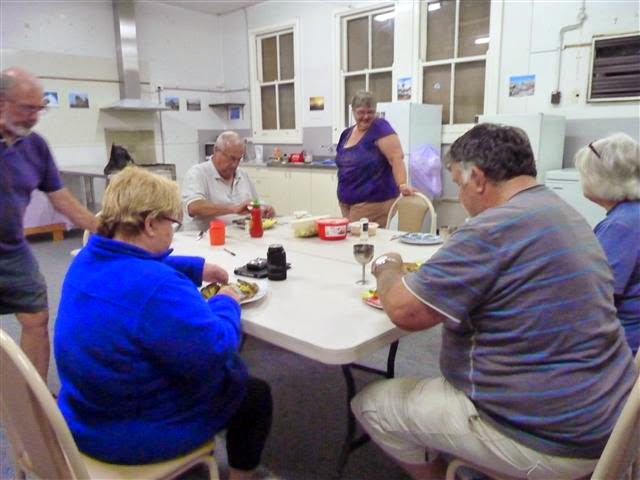The final two holes were played this morning at Kalgoorlie
golf links which was voted an excellent course. At the end they were presented
with a certificate recognising their achievement. Everyone went their own way
for the morning and then in the afternoon we came together to go to the
brothel. The Madam showed us through and told us the history of brothels in
Kalgoorlie. She bought the business 23 years ago when her husband died and she
needed to do something to survive. Originally brothels were spread around
throughout the area, but then they were all moved to Hay Street, an industrial
area, so that Kalgoorlie would become more family oriented. The working girls
had to live in the brothel and were banned from going to any public area in the
district. They were not allowed out of the brothel without the Madam being with
them. Now there is only one brothel with two working girls because there aren’t
so many men here without families. The prices were fairly eye popping (about
$280 an hour, although you could get short term, 15 minutes for $110. Since the
rules have been relaxed and working girls are allowed to advertise and solicit,
there is a huge increase in STD’s and there are strains that don’t respond to
antibiotics. In brothels it is mandatory that condoms are used, but this isn’t
the case with many of the street girls.
The Madam’s spiel was very entertaining as she told not only the
history, but shared lots of anecdotes. We were shown the Starting Gates, where
the first contact is made, and then a typical room. We also saw domination room
with its collection of handcuffs, leg ropes, whips and lots of other
interesting objects.

Some of us also went out to the large open cut to the
viewing platform. The depth is incredible and the different colours of the soil
and rock are spectacular. There are roads everywhere wending their way back and
forth around the many levels. On them were huge trucks of stone which looked
like matchbox toys from where we were standing. We were lucky enough to be
there when they were blasting. The noise was deafening as it thundered from
down in the hole and bounced and echoed off the sides, then there was the sight
of all the dust and the wall coming away.


.JPG)
.JPG)

.JPG)
.JPG)
.JPG)
.JPG)
.JPG)
.JPG)
.JPG)
.JPG)
.JPG)

.JPG)
.JPG)
.JPG)
.JPG)
.JPG)
.JPG)
.JPG)
.JPG)
.JPG)
.JPG)
.JPG)
.JPG)
.JPG)
.JPG)
.JPG)
.JPG)
.JPG)
.JPG)
.JPG)
.JPG)
.JPG)
.JPG)
.JPG)
.JPG)
.JPG)
.JPG)
.JPG)
.JPG)
.JPG)
.JPG)
.JPG)
.JPG)
.JPG)
.JPG)
.JPG)